Occurrence and Evaluation of Chromium Reducing Bacteria in Seepage Water from Chromite Mine Quarries of Orissa, India ()
1. Introduction
Chromite deposits in India are mostly localized in Sukinda valley (21°0’N-21°5’N: 85°43’E-86°0’E) and BaulaNuasahi belt (21°10’N-21°15’N: 86°18’ E-86°22’ E) of Jajpur and Keonjhar districts of Orissa respectively. Mining operations in these areas by nearly 14 different companies are generating chromite ores and huge amount of mine overburden. These chromite ore bodies contain chromium in trivalent form [Cr(III)], which is extremely insoluble and immobile in nature. The inert chromites in serpentinite rocks generate hexavalent chromium [Cr(VI)] through oxidation and are mobilized into the water bodies [1] leading to extensive chromium pollution in and around Sukinda and Baula-Nuasahi areas of Orissa. Analysis of accumulated seepage water from different mine quarries of Sukinda valley, Baula-Nuasahi areas and waste water from chrome ore beneficiation (COB) plants have indicated wide degree of variations in total and hexavalent chromium in the seepage water with respect to location and particular season of the year [2].
Hexavalent chromium, the most oxidized form of chromium is highly soluble in water and can easily penetrate biological membranes. It is toxic to all forms of living systems including microorganisms by causing oxidative stress [3], DNA damage and altered gene expression [4]. Moreover, Cr(VI) is also mutagenic, carcinogenic and teratogenic and has been recognized as a priority pollutant [5].
The conventional method of effluent treatment in chromite mines comprises of chemical reduction, followed by precipitation, ion exchange and adsorption on activated charcoal, alum, ferrous sulphate, kaolinite and ash. But most of these processes need huge quantities of chemical reagents, energy and cost along with accumulation of secondary by products. On the contrary, microbial reduction of toxic hexavalent chromium to relatively non-toxic trivalent form [Cr(III)] has been identified as a cost effective strategy for detoxification and removal of Cr(VI) [6,7].
Chromate resistant bacteria isolated from anthropogenic [8] and geogenous sources [9] have been shown to reduce hexavalent chromium under aerobic [10] or anaerobic [11] conditions. Pure cultures of Cr(VI) reducing bacteria have been tested and applied for detoxification of Cr(VI) contaminated wastewater [12,13]. In addition, application of whole cells of chromate reducing bacteria and immobilized chromate reductases could be a promising approach for bioremediation of Cr(VI) in wide range of environments [7,14,15].
The present study is an attempt to evaluate the hexavalent chromium reduction potential of chromium resistant bacteria isolated from accumulated seepage water of chromite mine quarries of Sukinda Valley and Baula-Nuasahi areas of Orissa, India. We have also demonstrated the reduction of Cr(VI) in mine seepage water by a potent bacterium Corynebacterium paurometabolum SKPD 1204.
2. Materials and Methods
2.1. Collection and Analysis of Samples
Mine seepage water accumulated in different open cast and underground chromite mine quarries in and around Sukinda, South Kaliapani and Saurabil located in Sukinda Valley of Jajpur district and those of Baula, Nuasahi and Bangur of Baula-Nuasahi areas of Keonjhar district, Orissa, India were collected in sterile polypropylene bottles and stored at 4℃ until used for analysis. Water samples were filtered through Whatman No. 42 filter paper and analyzed for soluble metal content in an Atomic Absorption Spectrometer (VARIAN SpectrAA 20 plus) following the standard methods of American Public Health Association (APHA) [16]. AAS grade metal solutions (Sigma-Aldrich, USA) were used as standards.
2.2. Microbiological Analysis
Aerobic, heterotrophic bacterial population of the mine seepage water was determined by plate-count technique using peptone yeast extract glucose (PYEG) agar medium [17]. The medium contained (g/L), yeast extract, 5.0; peptone, 10.0 and glucose, 3.0 (pH 7.0). The plates were incubated at 32℃ for 2-4 days and total population was calculated from the colony forming units/mL of sample. Morphologically distinguishable bacterial colonies were isolated in pure from and maintained on slopes of the same medium at 4℃.
Microbial activity of the seepage water samples was determined using fluorescein diacetate (FDA) method [18]. One mL of water sample, 24 mL phosphate buffer (pH 7.0) and 1 mL of FDA (final concentration 10 mg/mL) was taken in a 250 mL Erlenmeyer flask and agitated on a rotary shaker (120 rpm) for 3 hours at 35℃. The reaction was stopped by adding equal amount of analytical grade acetone and centrifuged at 12,000 rpm for 2 min. Optical density of the supernatant was read at 490 nm. The amount of fluorescein formed was determined from the standard curve prepared in the same way and FDA hydrolyzing activity was expressed as mg fluorescein/mL/h.
2.3. Evaluation of Chromate Tolerance
Chromium tolerance of the bacterial isolates was determined by agar dilution method. Peptone yeast extract glucose agar medium supplemented with different concentration of chromium as K2CrO4 was streaked with freshly grown bacterial cultures and were then incubated at 35℃ for 24-48 h. Ability of the isolates to tolerate Cr(VI) was recorded by visible growth on agar plates.
2.4. Screening of Cr(VI) Reduction
Chromium tolerant isolates were tested for their Cr(VI) reducing ability in modified KSC medium [19] and Vogel Bonner broth [17]. The KSC medium contained (g/L) NH4Cl, 0.03; K2HPO4, 0.03; KH2PO4, 0.05; NaCl, 0.01; Sodium acetate, 2.0; MgSO4∙7H2O, 0.01; CaCO3, 0.005; FeCl3∙7H2O, 0.005; and glucose 10.0 (pH 7.2). Vogel Bonner (VB) broth was prepared using 2% (v/v) of Vogel Bonner concentrate which contained (g/L), anhydrous K2HPO4, 500.0; Na(NH4)HPO4∙4H2O, 175.0; Citric acid, 100.0; MgSO4∙7H2O, 10.0 and 25% D Glucose 20.0 mL (pH 7.0). Erlenmeyer flasks (100 mL) containing 25 mL of medium was inoculated with 106 cells/mL of freshly grown cultures and incubated at 35℃ under continuous shaking (120 rpm). Reduction of chromium was estimated by measuring the decrease in hexavalent chromium in the culture filtrate at regular interval following 1,5-diphenyl carbazide method [20].
2.5. Measurement of Growth
Growth of chromate reducing bacteria in liquid media was measured following the viable count method. Bacterial cultures were serially diluted and plated on PYEG agar medium and the number of colony forming units/mL was determined after incubation at 32℃ for 2-4 days.
2.6. Characterization and Identification of Bacterial Isolates
Selected bacterial isolates were characterized morphologically and physio-biochemically following standard microbiological methods as described in Gerhardt et al. (1994) [21]. The characteristics of the isolates as determined during the present study were compared with those described in Bergey’s Manual of Systematic Bacteriology Volume 1 (Holt and Kreig 1989), Volume 3 (Holt et al. 1989) and Bergey’s Manual of Determinative Bacteriology 8th Edition (Buchanan and Gibbons 1987) for determining their taxonomic identity.
3. Results
3.1. Physico-chemical Analysis of Mine Seepage Samples
Physico-chemical characteristics of 14 mine seepage water samples, 7 each collected from chromite mines located in Sukinda valley and Baula-Nuasahi belt (Figure 1) are presented in Table 1. The samples were slightly acidic to neutral (pH 5.1-7.2) in nature with a chromium content ranging from 0.19 to 3.12 mg/L. The load of chromium in samples from Sukinda, South Kaliapani and Saurabil areas was higher than those from Baula, Nuasahi and Bangur areas. Hexavalent chromium content of Sukinda valley samples ranged from 0.19 to 3.12 µg/mL. However, hexavalent chromium was below detection limit in Baula-Nuasahi areas. Other metals like Ni, Co, Zn, Mn and Fe were comparatively low but the concentration of magnesium was strikingly high showing a wide range of 4.8-39.0 mg/L.

Figure 1. Key map of the study area showing the chromite mining sites in Orissa, India.

Table 1: Physico-chemical analysis of mine seepage water samples of chromite mine quarries of Orissa, India.
3.2. Microbiological Characteristics
Microbial density of the water samples as evident from dilution and plate count was in general low showing a wide degree of variability (1.07-76.0 × 103 cfu/mL). However, it was evident that microbial load of samples from Sukinda valley was approximately ten fold higher than those from Baula-Nuasahi areas (Table 2). Microbial activity of the seepage samples as measured by FDA hydrolysis activity also showed a significant variation, but maintained a strong positive correlation with the total microbial count. The co-efficient of correlation (r) between FDA activity and total microbial count was r = 0.9733. A total of 145 aerobic heterotrophic bacteria were isolated in pure form. Majority of them were aerobic, Gramnegative, motile rods and do not produce any pigment. In addition, 109 (74%) of these isolates tolerated 2 mM Cr(VI) when tested in peptone yeast extract glucose (PYEG) agar medium (Table 3).
3.3. Screening for Cr(VI) Reduction
Hexavalent chromium reducing ability of these 109 isolates was screened in Vogel Bonner broth and KSC medium supplemented with 2 mM Cr(VI). The reducing efficiency of the isolates was better expressed in complex KSC medium than in synthetic VB broth and such efficient strains were prevalent amongst the isolates of Sukinda valley mining areas. In all, 10 potent isolates were selected which under aerobic condition could reduce 50-60% and 81-92% of the initial 2 mM Cr(VI) in VB broth and KSC medium respectively (Figure 2).
3.4. Morphological and Biochemical Characteristics of the Isolates
Morphological and biochemical characteristics of all the selected isolates were evaluated (Table 4). Most of them
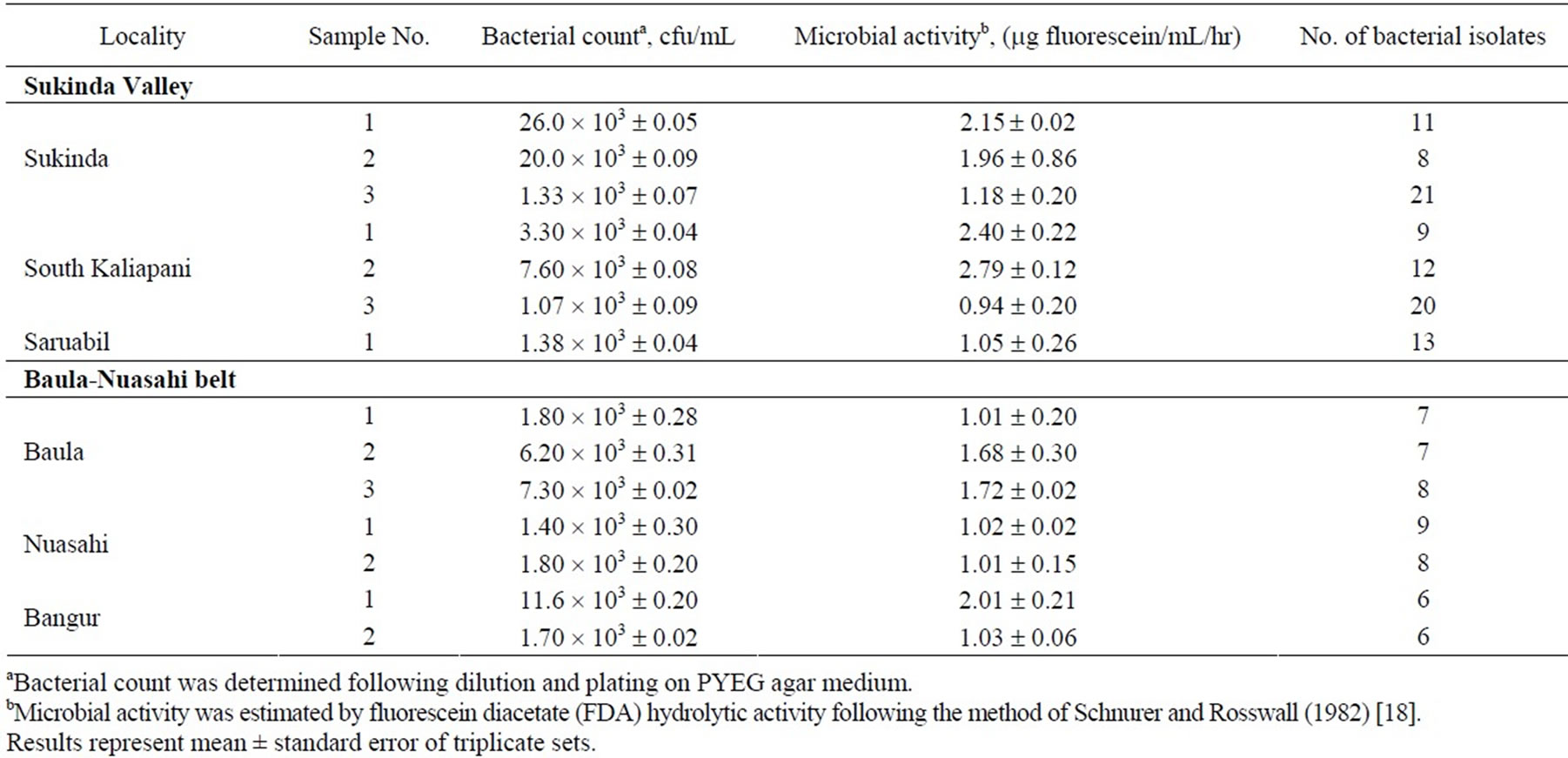
Table 2. Microbiological analysis of mine seepage water samples of chromite mine quarries of Orissa, India.

Table 3. Screening of chromium tolerant bacterial isolates for hexavalent chromium reduction efficiency.
were Gram-negative, motile, short rods or rods in pairs (SKPD 1210). Only one isolate, SKPD 1204 was Grampositive, motile and slightly curved rod. The morphological and biochemical characteristics of the isolates were compared with those of Bergey’s Manual of Systematic Bacteriology (Holt and Kreig, 1989; Holt et al. 1989) and Bergey’s Manual of Determinative Bacteriology (Buchanan and Gibbons, 1987). The Gram-negative isolates were tentatively identified as Pseudomonas putida (SKPD 1202), Pseudomonas syringae (SKPD 1106), Pseudomonas viridiflava (SKPD 1104), Acinetobacter baumanni (SKPD 1206), Alcaligenes paradoxus (SKPD 1210), Alcaligenes sp. (SKPD 1211), and Cupriavidus sp. (SKPD 1108). The only Gram-positive isolate, SKPD 1204 was identified as Corynebacterium paurometabolum.
3.5. Growth Associated Cr(VI) Reduction in Mine Seepage
Corynebacterium paurometabolum SKPD 1204, the most potent chromate reducer was used further for its Cr(VI) reducing ability in mine seepage samples. Results (Figure 3) show that the isolate could reduce nearly 44% of 60 µM Cr(VI) in mine seepage water, however, its reducing ability was increased to 71% when mine seepage was supplemented with 0.1% glucose. Reduction of nearly 95% of the total Cr(VI) in mine seepage was achieved by the bacterial isolate SKPD 1204 when seepage water was supplemented with 2% VB concentrate.
4. Discussion
Generation of hazardous hexavalent chromium from the inert chromite ore bodies and its distribution in accumulated seepage water in chromite mine quarries as well as ground water of Sukinda Valley has been documented. The present findings of the soluble metal content analysis of seepage water from chromite mines in Sukinda Valley (Table 1), corroborate those of Godgul and Sahu (1995) [1] and Dhakate and Singh (2008) [22]. On the contrary, seepage water from chromite mines in BaulaNuasahi areas were apparently free from Cr(VI) contamination.
Reports on the analysis of microbial density and activity of the seepage water sampled from chromite mining areas are relatively very few compared to the extensive microbial studies of acid mine drainage [23,24]. Though the microbial activity of the samples was positively correlated with the total microbial counts, the population density of aerobic heterotrophic bacteria was relatively low (Table 2) and the calculated r value far exceeds the tabulated one at P = 0.001. So the correlation appeared to be highly significant. The chromite mine seepage water microflora was dominated by Gram-negative bacteria (nearly 55%) contradictory to the high presence of Grampositive bacteria in areas polluted with metal [25-27].
Bacterial isolates obtained from seepage water samples were found to have an exceptional ability to adapt in hexavalent Cr(VI) polluted environment, as more than 74% (109) of total isolates could easily tolerate 2 mM Cr(VI). These Cr(VI) tolerant isolates growing under Cr-stressed condition have developed physio-chemical mechanism of Cr-reduction as an effective tool for detoxification of toxic Cr(VI). The lower chromate reduction potential of indigenous microbiota from BaulaNuasahi mining areas (Table 3) might be due to the lack of development of Cr(VI) reduction mechanisms as an adaptive feature. Similarly, Molokwane et al. 2008 [27]
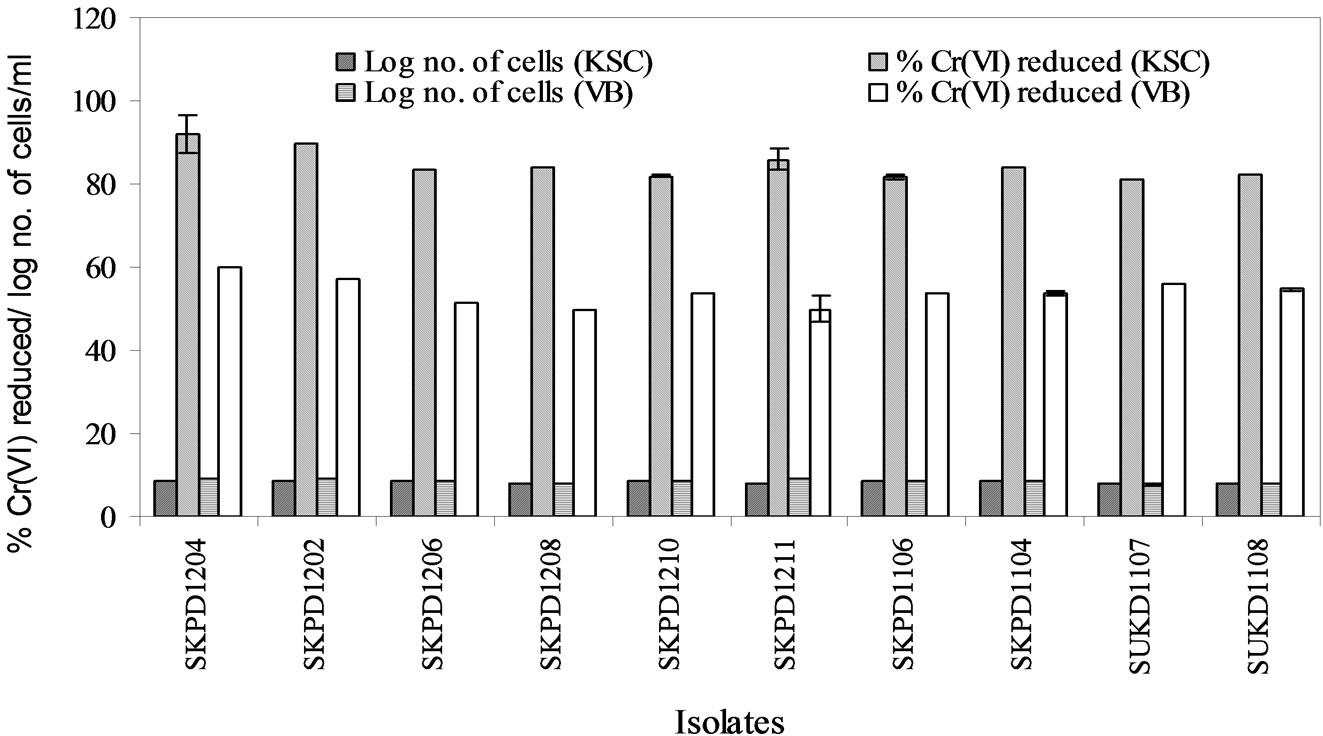
Figure 2. Chromate reduction of selected chromium tolerant bacterial isolates during growth in complex (KSC) and synthetic (VB) media.
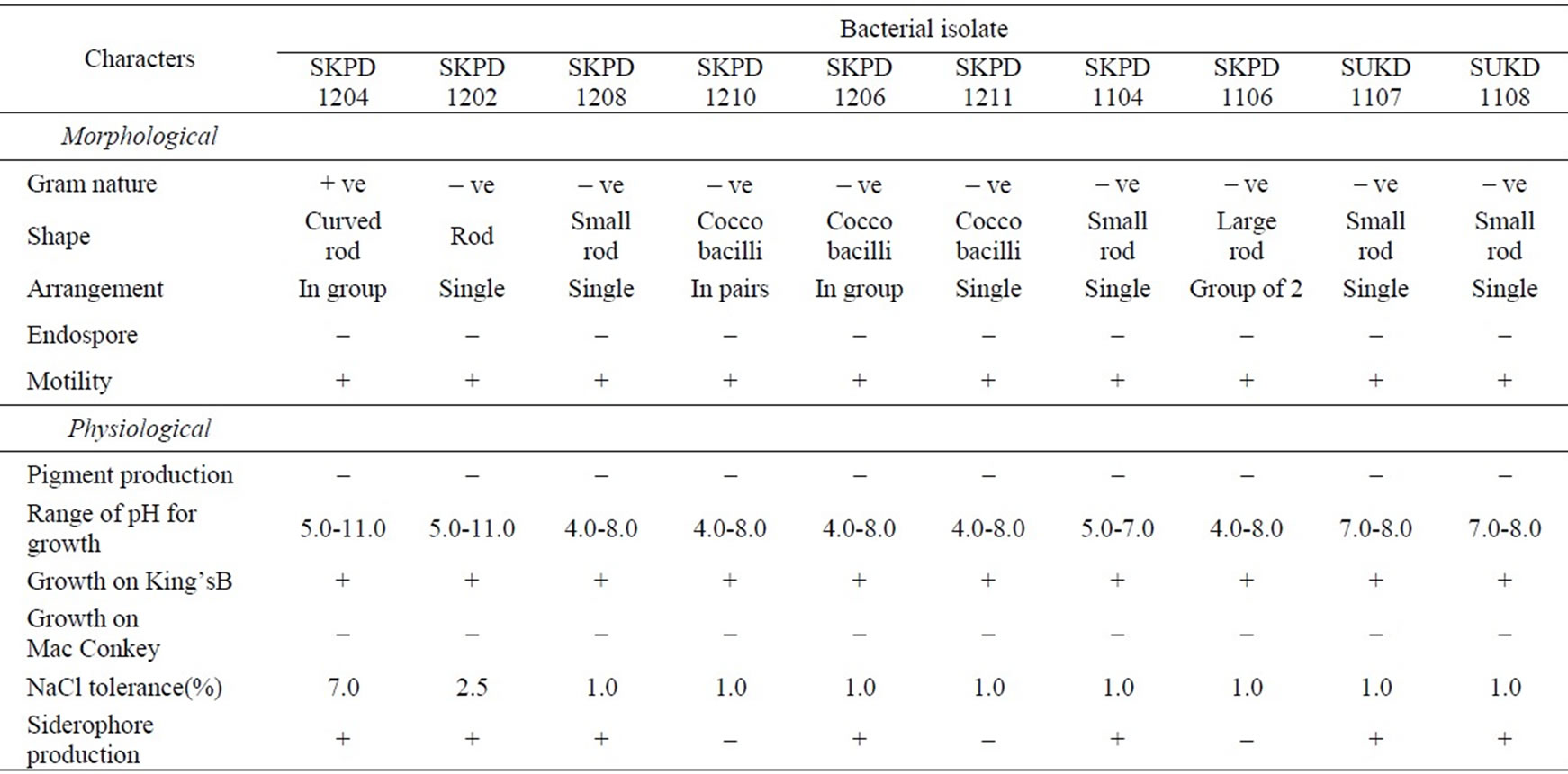
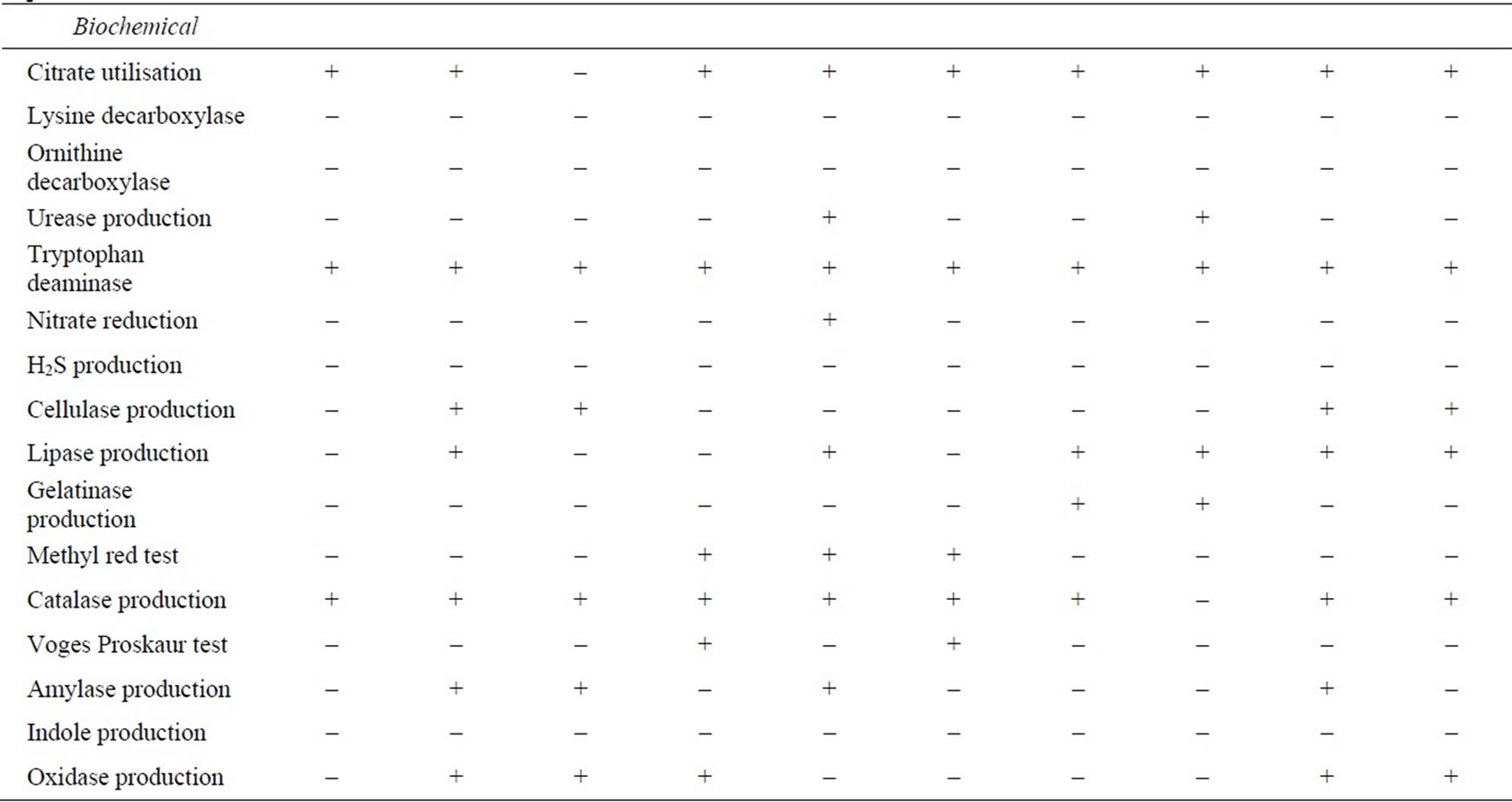
Table 4. Morphological, physiological and biochemical characteristics of some selected bacterial isolates obtained from chromite mine seepage water.
also reported the presence of Cr(VI) reducing consortium from a contaminated mine site in Brits, South Africa.
The selected Gram-negative bacterial isolates mostly belonged to Pseudomonas and Alcaligenes. Such an occurrence of Pseudomonads in metal polluted environments including chromite mine effluent [7,28] is not uncommon. Out of the 10 selected strains, SKPD 1204 reduced more than 60% and 90% of 2mM Cr(VI) in VB broth and KSC medium respectively and was found to be most efficient one (Figure 2). This strain was identified as Corynebacterium paurometabolum based on morpho logical and biochemical characteristics (Tables 4 and 5). The identity of which was further confirmed by the Institute of Microbial Technology, Chandigarh, India and was deposited to the Microbial Type Culture Collection as Corynebacterium paurometabolum SKPD 1204 with an accession number MTCC 8730. Further the strain could reduce about 94% of initial 60 µM Cr(VI) in mine seepage water supplemented with VB concentrate (Figure 3) in a manner similar to indigenous consortium

Figure 3. Growth associated Cr(VI) reduction by bacterial isolate SKPD 1204 in mine seepage (a), mine seepage supplemented with 0.1% glucose (b) and mine seepage supplemented with 2% VB concentrate (c). Residual Cr(VI), µM (♦); log no. of cells/mL (■).
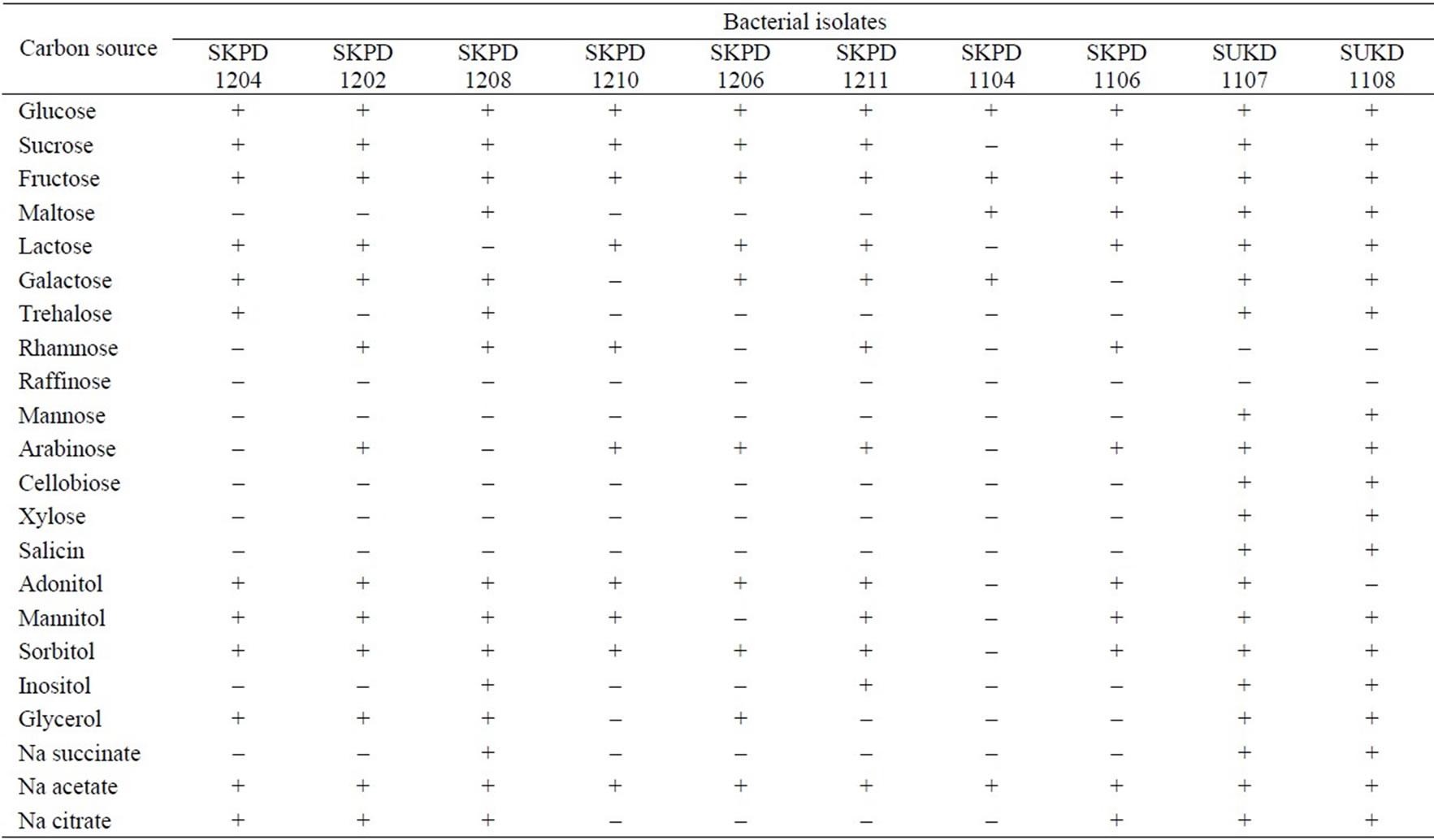

Table 5. Utilization and fermentation of different carbon sources by some selected bacterial isolates.
from mine seepage and contaminated sites of Brits, South Africa [27,29]. Thus the combined ability of chromate resistance as well as bioreduction of Cr(VI) to its nontoxic form by C. paurometabolum SKPD 1204 could be useful for detoxification of chromium in chromite mining sites in general and Orissa, India in particular.
5. Acknowledgements
The authors acknowledge the financial support from the Department of Biotechnology, Ministry of Science and Technology, Government of India vide Sanction number BT/PR/5766/NDB/51/061/ 2005.